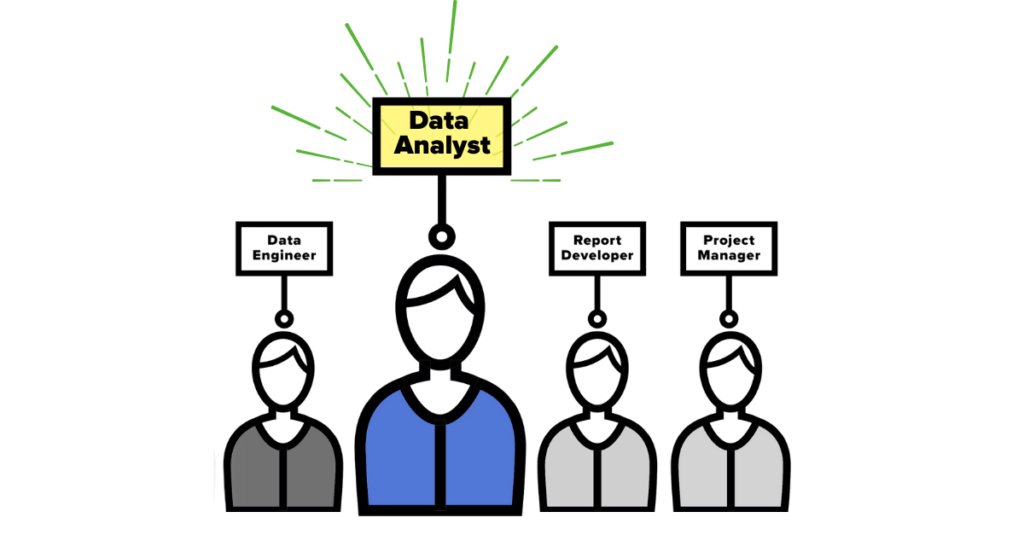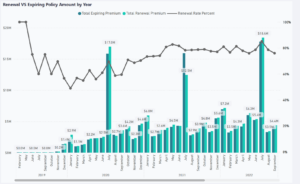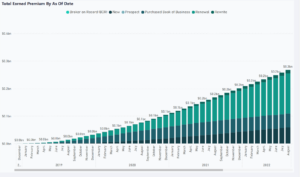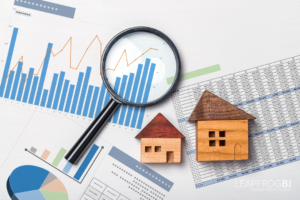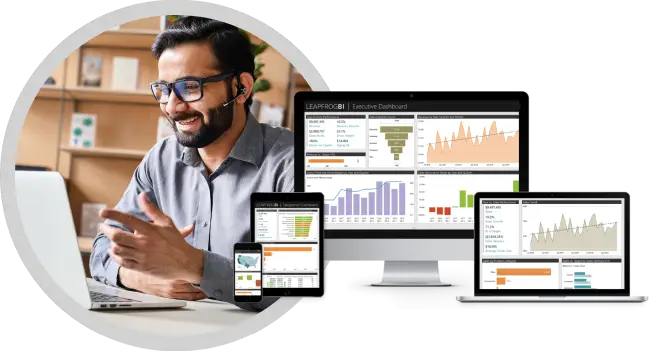Today, businesses of all sizes across all industries rely heavily on data to provide insights that drive strategic decision-making. And there’s a lot of data to manage. According to a 2024 report on artificial intelligence (AI) and information management, 64% of organizations manage at least one petabyte of data and 41%, 500 petabytes or more.
Efficiently storing, managing, and ultimately analyzing all this data for relevant, actionable insights isn’t a straightforward task. While software tools can help, an experienced data analyst is needed at the helm to ensure data is cleaned, accurate, and properly analyzed to guide actionable business decision-making and strategizing.
What exactly does a data analyst do? What should you look for when hiring a data analyst—and why is it so hard to find a good data analyst?
This post covers what you should consider before hiring a full-time data analyst, including the main challenges and red flags to watch for.
What Does a Data Analyst Do?
The specific responsibilities of a data analyst will vary depending on your organization’s unique team, workflow, and goals.
Big picture, data analysts help businesses better understand their data, transforming numbers into actionable insights you can use to make evidence-based, strategic business decisions. In doing so, data analysts often collaborate with teams across an organization, including programmers, engineers, and executives, to identify areas for improvement and aid the creation of data-driven strategies.
To support these bigger-picture objectives, data analysts must first get into the weeds and crunch the hard numbers. In other words, data analysts gather, clean, analyze, and interpret raw data—and then translate it into strategic insights to communicate to key stakeholders for business decision-making.
Here’s a closer look at the main responsibilities of a data analyst:
1. Collect and Manage Data
Data analysts are responsible for designing and maintaining data systems and databases. They mine data from primary and secondary sources, using tools like surveys, software, and data collection tools.
Then, they reorganize this data into formats readable by both humans and machines. During this process, they also assess data quality and remove any irrelevant or low-quality data as needed.
2. Analyze and Interpret Data
After data collection, comes data analysis.
Data analysts use statistical tools to analyze and interpret datasets. Specifically, they’re looking to identify trends and patterns from which they can draw conclusions to drive better decision-making and problem-solving.
For example, a data analyst may notice a pattern in customer behavior and communicate that information to marketing teams to help power new campaign strategies.
3. Report and Communicate Insights
After analysis, a data analyst’s work isn’t done yet.
Next, they need to produce reports and dashboards to communicate these data-driven insights to executives and other key stakeholders. To create these reports, data analysts may use data visualization tools like Tableau and Power BI to present their findings to non-technical teams.
This is where a data analyst’s soft skills come into play. Data analysts need to be able to effectively convey the biggest takeaways from data analysis in a way that relates to your organization’s bigger-picture, high-level business strategies, such as pricing, scheduling, and operations.
Plus, data analysts often need to communicate this information to non-technical teams, providing relevant, accurate insights that are both easy to understand and primed to steer strategic decision-making.
4. Maintain and Optimize Data Infrastructure
Data is a constantly evolving entity, which means a data analyst’s work is never done; they must continuously collect data, conduct analyses, and create reports.
To that end, data analysts are also responsible for ongoing database management and maintenance. Databases are living beasts that require extensive oversight to ensure efficient operations and valuable insights that support better decision-making and company growth. It’s up to data analysts to stay on top of infrastructure updates, troubleshoot issues as they arise, and continuously adapt to evolving business requirements.
What Are the Characteristics of a Good Data Analyst?
A strong data analyst should not only have relevant technical skills but a strong understanding of your organization’s unique challenges, goals, and market presence. They must be able to connect the dots between hard data and bigger-picture business goals.
1. Demonstrable Technical Experience
Many data analysts have degrees in fields like mathematics, statics, or computer science—but that doesn’t mean formal education is always a requirement for finding a good data analyst. Instead, what’s most important is their hard skills and practical experience with data management and analysis technologies.
Specifically, a seasoned data analyst should have knowledge of:
- Programming languages: SQL, R, Python, and ETL (Extract, Transform, Load) processes
- Spreadsheet tools for data analysis: Excel, Google Sheets
- Data visualization tools: Tableau, Qlik, Power BI
- Mathematical and statistical skills: ability to gather, organize, and analyze data
2. Business Knowledge and Understanding
While data analysis is a tech-heavy role, a good data analyst should also have a certain amount of soft skills, such as leadership and strategic business planning. After all, the primary goal of data analysis is to transform raw data into insights that can drive more intelligent decision-making and problem-solving.
To best support your organization’s overall business goals, then, a good data analyst should be able to do more than just crunch numbers. They should also have the capacity to think strategically about data, with good instincts about what information is irrelevant or relevant. Plus, they’ll also need strong communication and presentation skills in order to share their findings with other stakeholders, especially non-technical teams.
From analysis to reporting, a data analyst should have keen priority-setting and project management skills.
3 Main Challenges in Hiring a Data Analyst
Data analysts play an important role in your organization, helping your entire team make more informed, evidence-based decisions across various tasks, like marketing, operations, and financial planning.
Finding the right data analyst to work with is crucial for your business’s long-term success and growth—but it can be hard to find the right full-time data analyst that’s a good match for your team. Here’s why:
High Market Demand
The data analytics industry is experiencing massive growth. In 2024, the market size was estimated at $15.76 billion dollars. In less than a decade, that value is expected to balloon to $211.28 billion. With such intense market growth, it’s clear that big data, analytics, and data engineering are in-demand technology skills. In fact, 51% of surveyed CIOs report they plan to increase their internal head count for data capabilities in the next year.
With such high demand for data analytics talent, you face stiff competition when getting ready to hire a full-time data analyst. Unfortunately, this means small businesses are more likely to lose out on valuable talent that gets gobbled up bigger businesses with deeper pockets.
Skills Gaps
We know the demand for data analysts is high—and set to keep growing. But the search for a good data analyst is made even more difficult by the skill shortage.
According to a recent report on digital leadership from global professional services organization Nash Squared, more than half (54%) of digital leaders worldwide say “a skills shortage is preventing them from keeping up with the pace of change.” The sting of the data analytics skills gaps is felt across organizations, even affecting marketing teams. In a report from MarketingWeek, over a third (37%) of 3,000 brand-side markets “cited a lack of data and analytics skills as the biggest skills gap in their teams.”
Simply put, it’s a tough time to hire a full-time data analyst, whose niche skills and combination of technical and business acumen is in short supply.
Top 3 Interview Questions to Ask When Hiring a Data Analyst
Data analysts help steer the direction of your organization. If they do their jobs correctly, they’ll guide your business towards more powerful, effective decision-making that sets the stage for long-term growth.
Use these three data analyst interview questions to help you find the right candidate:
1. Can you describe different sampling techniques and when to use each?
Data analysts use sampling techniques to support data collection and analysis, enabling them to determine broad insights without examining an entire dataset. A good candidate should be knowledgeable about diverse sampling methods and be able to discern the most efficient ways to lead data analysis.
In particular, they should feel comfortable discussing:
- Simple random sampling
- Cluster sampling
- Stratified sampling
- Systematic sampling
- Judgmental or purposive sampling
2. How do you handle missing data?
This is a good question to gauge a potential data analyst’s ability to approach situations where data is incomplete—a common challenge in data analytics.
Look for a candidate who can come up with multiple techniques to tackle the problem of missing data, such as:
- Regression substitution
- Mean or median imputation
- Listwise deletion
- Validation reporting
3. How do you communicate complex concepts to non-technical stakeholders?
This is one of the most important questions to ask when you’re considering hiring a full-time data analyst.
Remember that a data analyst’s primary function is to transform raw data into actionable insights that your organization can use to power strategic decision-making and problem-solving for critical business functions—and a big part of that is being able to clearly communicate data-based insights to stakeholders across your organization, including those without a technical background.
A good data analyst should be able to provide examples of how they’ve successfully communicated findings in the past, e.g., via reporting software, visualizations, or presentations. Strong candidates will explain how they tailored their approach to match the needs of different audiences.
3 Red Flags When Hiring a Data Analyst
Finding the right data analyst for your organization isn’t a cookie-cutter process. Remember, candidates are under a lot of pressure during interviews, so it’s natural if they flub a question here or there.
Still, keep an eye out for a few red flags that could signal this data analyst is not the right match for your business’s needs.
Poor Communication Skills
While data analysis is largely a technical role, it’s not all about crunching the numbers. Strong data analysts should also display a solid grasp of soft skills, namely, communication skills—so watch out for that during an interview.
If the candidate struggles to explain technical concepts in concise, easy-to-understand terms, this might signal larger communication troubles. Down the line, this would make it hard for the data analyst to share data-driven insights with your organization’s different teams, ultimately impacting everyone’s ability to problem-solve, make decisions, and strategize.
Outdated Knowledge of Tools and Languages
The data analytics industry moves fast with tools and languages frequently evolving and new ones regularly emerging. While it’s not realistic for a data analyst to be an expert in every single tool out there, they should be up to speed with the most popular programming languages, data visualization tools, and spreadsheet tools.
Additionally, be on the lookout for data analysts who have done their homework and come bearing data analytics certifications, like:
- Google Data Analytics Professional Certificate
- IBM Data Analyst Professional Certificate
- Microsoft Certified Power BI Data Analyst Associate
Limited Understanding of the Business Context
A data analyst’s job doesn’t end at running the hard numbers. Their most important role in your organization is helping drive business improvements, across the board. To do that, they need to analyze those hard numbers AND provide teams with relevant insights aligned with business goals.
This requires a keen understanding of your organization’s bigger-picture business goals. If a candidate seems nose-deep in the data with blinders on, this may signal a lack of awareness or understanding of the larger business context. Down the line, they may miss valuable opportunities to share data that could contribute to important business decision-making.
Instead, look for data analysts who are tuned into how their work contributes to an organization’s bigger goals.
How Much Is a Data Analyst Paid?
A data analyst’s salary can vary significantly depending on location, experience, education, etc. Plus, in a high-demand market where data analytics skills are in short supply, some big companies are ready to offer additional incentives (like year-end bonuses and cushy benefits) to attract top talent.
According to Indeed, the national average salary for a data analyst in 2024 was about $82,000, ranging from $51,000 to $130,000 across the country. See more detailed estimates of how much a data analyst is paid in specific cities and states.
Why Is it Hard to Find a Good Data Analyst?
A strong data analyst should have niche technical skills, including proficiency in programming languages and data visualization tools. These skills are so high in demand, that some big-name companies are even starting to offer full-time data analyst positions to candidates without a college degree, instead prioritizing real-life experience and practical knowledge.
It just goes to show how in-demand data analytics skills are. According to the Adastra 2024 Data Professionals Market Survey Forecast, for the second year in a row, “there continues to be a growing concern over the availability of skilled talent to fulfill the needs of the burgeoning field of AI and data analytics.”
If you’re looking to hire a data analyst, the current market is the perfect storm of high demand, low supply. This is especially a challenge for small businesses who now find themselves competing with large companies (who can offer big salaries) to select top talent.
What Happens If You Hire the Wrong Data Analyst?
With stiff market competition, you might not get your first choice if you want to hire a full-time analyst. But if you hit a few data analyst red flags during your interview, don’t settle.
If you hire the wrong data analyst, the consequences are intense:
- Low-Quality Data: Poor data analysis practices can lead to inaccurate, incomplete, and unreliable results. Ultimately, these flawed insights risk leading to faulty business decisions.
- Wasted Resources: Mismanaged data is a waste of time, money, and labor.
- Missed Opportunities: Inaccurate insights that don’t reflect market trends or align with business goals can result in missed growth opportunities.
What’s the Difference Between a Business Analyst and a Data Analyst?
While data analysts and business analysts share some overlapping tasks and responsibilities, they remain two distinct roles.
Data analysts play a more technical role in your organization, possessing deep expertise in programming languages and tools. Their main focus is gathering, processing, and analyzing data to identify trends and insights for better decision-making.
Business analysts, on the other hand, take on higher-level, more strategic tasks. They focus on understanding business processes, goals, and challenges; then, they use insights from data analysts to help identify areas for improvement.
Consider Hiring a Fractional Data Team Instead of a Data Analyst
Data analysts play an essential role in your organization’s decision-making and strategy development, so for many organizations, it seems natural to hire a full-time, in-house data analyst. Today, however, high demand and low supply of skilled data analysts make it difficult for small- to mid-sized businesses to compete with deep-pocketed, large corporations for top talent.
But hiring full-time, in-house data analysts isn’t the only way to bring top-tier data analytics skills to your organization.
A fractional data team gives you the technical expertise and analytical skills of a data analyst—and more. Altogether, a fractional data team gives you data collection, management, analysis, and reporting, along with the expertise of business analysts, data architects, data engineers, and project managers.
Plus, a fractional data team delivers the flexibility and cost savings that simply aren’t possible with a full-time employee. With a fractional data team, you get access to expertise, talent, and skills—only when you need it.
Before committing to a full-time, in-house data analyst, learn more about the advantages of working with a fractional data team and what it can do for your business’s long-term growth.
